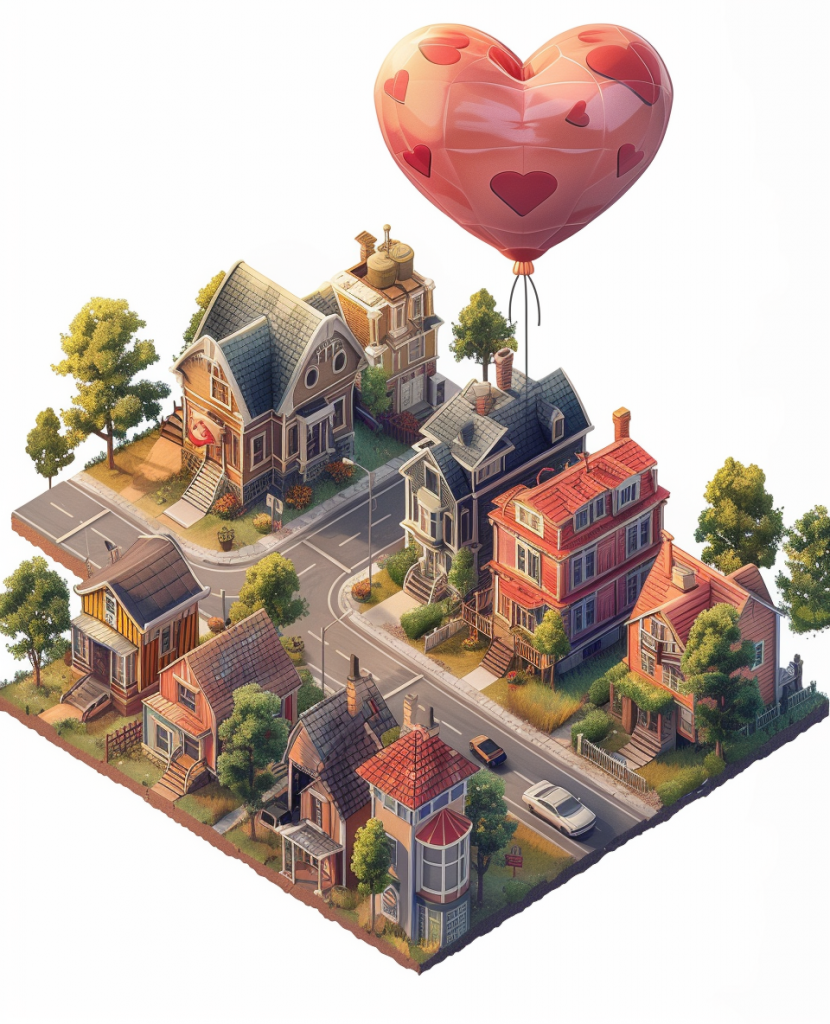You Can’t Zone For Love. But Regulatory Reform Could Increase The Supply Of Love In Your Heart.
It’s Valentine’s Day, which means that we’re going to be celebrating love all day! This might mean taking your sweetheart out for tacos, or, if you don’t have a sweetheart, just going out to get tacos by your own self. I fully endorse both options (just so long as they’re corn tortillas). You don’t have to buy your city diamonds. You don’t have to build a mega convention center out of expensive curved glass panels, or a huge stadium with a retractable roof. You don’t need a highway widening. If you’re thinking about how to show your city some love, here are some ideas to suit any Valentine’s Day budget:

Zoning Love.
Zoning reform is among the best ways to show a city love on Valentine’s Day. Why does your city have 76 zoning classifications? Shouldn’t people just be able to build buildings, within reason? Why do I need a 16′ setback in a downtown district? Why indeed. Zoning reform is a great way to guide the process of community development by making it easier for people to do things they want to do to build a great city. No, it doesn’t mean completely eliminating all regulations– rather, it just means making zoning work for you community, rather than just endlessly amending a series of ordinances and laws that were first written back in a premodern era when the consumption or sale of alcohol was illegal. That’s a really long time ago!
Help your community realize the YIMBY thesis, while you’re at it!

Parking Reform Love.
Parking reform refers to the practice of reducing or eliminating minimum requirements for off-street parking spaces in new development projects. I have written frequently about why this is important and how I deal with it in consulting work. Parking minimums drive up the cost of development projects by leaps and bounds. If you’re thinking about moving in with someone, you can always tell them that it’s a good way to reduce the minimum parking requirements by sharing one dwelling unit instead of living in two separate ones.
Weirdly, this has never worked for me trying to pick up women at the bar.

Old House Love.
Show an old house some love. You can do this by buying one and fixing it up, as we did in our house. If you don’t own a house but are in the orbit of houses and doing house-ly things, you can also just resolve to use more environmentally friendly products in your home or construction products. The common refrain– popular among YIMBYs, architects, engineers, and general goofballs- is that it’s too expensive to renovate old buildings, so they must be torn down. This is, of course, idiotic, because it ignores the fact of depreciation in the cost of housing; old buildings have depreciated and so if they have a higher value it speaks to the fact that their historic character gives them value less than to, say, the simple notion that the market is supply-constrained (which it may be!).
Opposing, the common refrain from the historic preservationists is that no new building can ever approximate the quality of construction in an old building. This is similarly demonstrably ridiculous, but, while I am generaly in favor of historic preservation, I think that historic preservation can come in many formats. Like maybe the city not harassing me for the exact way in which I decided to install new trim on my rotted third-floor windows to historical color palette standards, while allowing my neighbor to retrofit his entire house of the same vintage with white vinyl.
Take care of old stuff, people! And, hell, take care of old people, too, while you’re at it!

New House Love.
Every Valentine’s Day, I bring up a post I wrote now a solid ten years ago, in which I suggest a few Passiv Haus-themed comments you can offer to your lover. If your lover is PHIUS-CPHC® certified, which I am not, they may find it funny (I made the ASHRAE joke to my wife this morning first thing and she glowered before attempting to smother me with a pillow). In addition to the bangers of 2014-vintage Handbuilt City, you can also ask your lover: “Baby, are you compliant with IBC §1605? Because I’m about to fall head over heels for you!” I had another joke about live loads from ICC 1607, but we’ll skip that for the sake of, ahem, brevity.

Regulatory Love.
While zoning reform should focus on making it easier to build buildings, building code modernization should focus on helping people build better buildings. Building codes are a good way for states to encourage innovation in the construction industry in a way that doesn’t break the bank, lowers operating costs for building occupants, and makes buildings safer and more comfortable. Unfortunately, in many states (Michigan among them), the homebuilder lobbies aggressively push against codes. I am not aware of any jurisdictions in the state of Michigan that enforce IECC as adopted, and the current code adoption is tied up in court. It is not a terribly high priority for Gretchen “Love Cars And Suburban Sprawl” Whitmer. Sigh.
But for real, the regulatory apparatus exists for a good reason. It is meant to protect people from dangerous buildings, predation by landlords or businesses with unsavory objectives, and, of course, industries that might pollute or harm workers. Unfortunately, it’s become dysfunctional in many levels of municipal governance. Taking targeted approaches– whether you’re looking at building code, zoning code, parking policy, or something else- means you can think big but start small.

Non-motorized transportation love.
Say no to highway widenings. But say yes to investment in alternatives to cars and car infrastructure. It’s easier to be a better lover when you’re in good shape, and for the majority of able-bodied people, it’s possible to get around town on foot, bike, or using micromobility devices instead of cars. This makes for cleaner air and it saves taxpayers money that can then be invested in other cool stuff.




